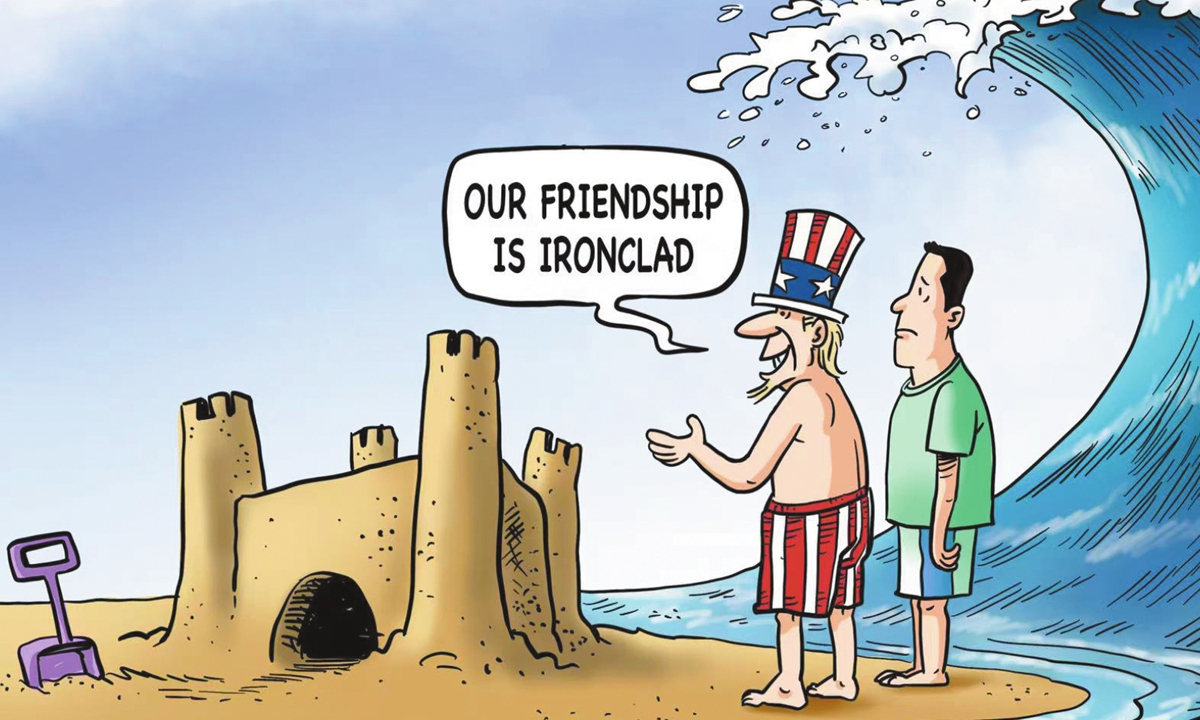
Illustration: Liu Rui/GT
US Secretary of State Antony Blinken's 11-day Asia-Pacific trip, from July 25 to August 3, covered vast distances. If Blinken's travel route were to be depicted on a map of East Asia, it would form a large circle surrounding China. And the primary objective of this "East Asia trip" was clear: to encircle China. It attempted to instill a "rock-solid" commitment in its Asian allies so that they willingly go through fire and water for Washington.
The US has frequently expressed intention to prioritize Asian affairs in the economic, diplomatic, and military fields. Washington hopes to demonstrate the US' ability to continue to play the role of a "leader" through engagement and dialogue, alleviating the concerns of its Asia-Pacific allies about being drawn into "superpower geopolitical conflicts."
Blinken was eager to consolidate the diplomatic "achievements" of the Biden administration. However, his visit to Asia created unnecessary tensions, provoked opposition, and hindered the development of regional countries. The US' "rock-solid" commitments to its Asian allies may seem strong, but they are as vulnerable as sandcastles. When the storm of US interests hits, they will turn into crumbly sand.




